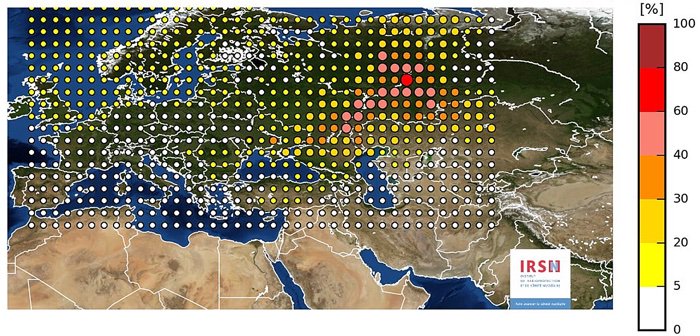Russia confirms a radiation blanket. Have we learned from the Chernobyl disaster?
Russia has just confirmed that Europe has a radiation blanket over it, but Russian scientists say that it’s harmless. However they acknowledged that it is “extremely contaminated” above the Ural Mountains. The radiation spike is at its strongest in the Chelyabinsk region, and is it close to the Kazakhstan border. The IRNS investigated and suggested “the most plausible zone of release lies between the Volga and the Urals”, but inside of Russia it actually shows that there is a radiation blanket over Europe. Ruthenium-106 is actually so rare that it doesn’t naturally occur, and it could have been released by an unreported accident at a nuclear fuel treatment site, or it could have been at a center for radioactive medicine.
 Ukraine is the home of one of the most radioactive places in the world, Chernobyl, and it is still HIGHLY contaminated and barely any people live there now. This accident caused 6 million people to be exposed to radiation, and the accident released 100 times more radiation than the Nagasaki and Hiroshima bombs.
Ukraine is the home of one of the most radioactive places in the world, Chernobyl, and it is still HIGHLY contaminated and barely any people live there now. This accident caused 6 million people to be exposed to radiation, and the accident released 100 times more radiation than the Nagasaki and Hiroshima bombs.
How can we learn from this disaster? What does this tell us about human nature and the risks that we take?
The 2 videos below show the devastation that was caused by the nuclear disaster in Chernobyl. Could the current cloud of radiation be related to this event so many years ago? We have a responsibility to protect this planet for ourselves and future generations. It is sad what can occur when human beings are careless with the power they are given.
Chernobyl Accident 1986
(Updated November 2016)
The Chernobyl accident in 1986 was the result of a flawed reactor design that was operated with inadequately trained personnel.
The resulting steam explosion and fires released at least 5% of the radioactive reactor core into the atmosphere and downwind – some 5200 PBq (I-131 eq).
Two Chernobyl plant workers died on the night of the accident, and a further 28 people died within a few weeks as a result of acute radiation poisoning.
UNSCEAR says that apart from increased thyroid cancers, “there is no evidence of a major public health impact attributable to radiation exposure 20 years after the accident.”
Resettlement of areas from which people were relocated is ongoing. In 2011 Chernobyl was officially declared a tourist attraction.
http://www.world-nuclear.org/information-library/safety-and-security/safety-of-plants/chernobyl-accident.aspx
The April 1986 disaster at the Chernobyla nuclear power plant in Ukraine was the product of a flawed Soviet reactor design coupled with serious mistakes made by the plant operatorsb. It was a direct consequence of Cold War isolation and the resulting lack of any safety culture.
nuclear power plant in Ukraine was the product of a flawed Soviet reactor design coupled with serious mistakes made by the plant operatorsb. It was a direct consequence of Cold War isolation and the resulting lack of any safety culture.


rosewater • Jan 3, 2018 at 1:45 pm
this is really scary.
zumie15 • Dec 26, 2017 at 9:49 pm
Wow this is so scar, Hopefully everything goes well cause one wrong move and thats it no more.